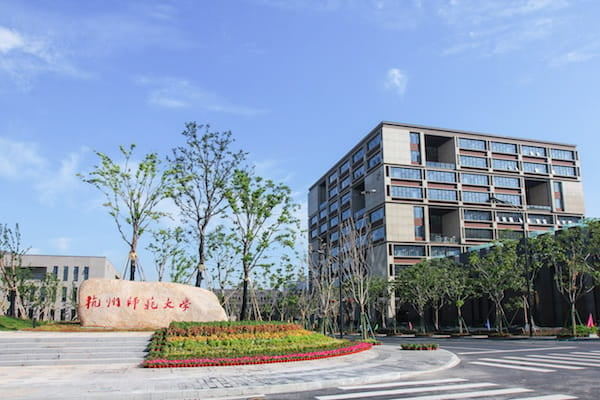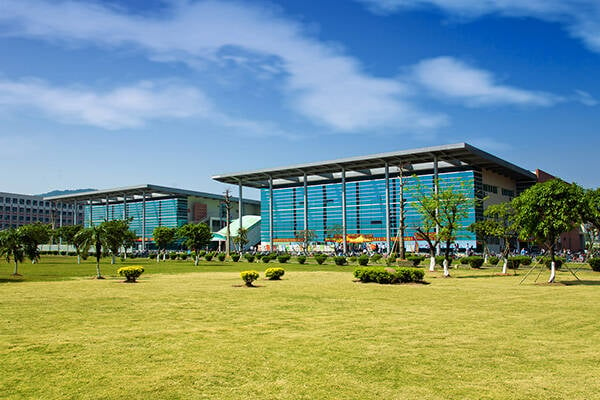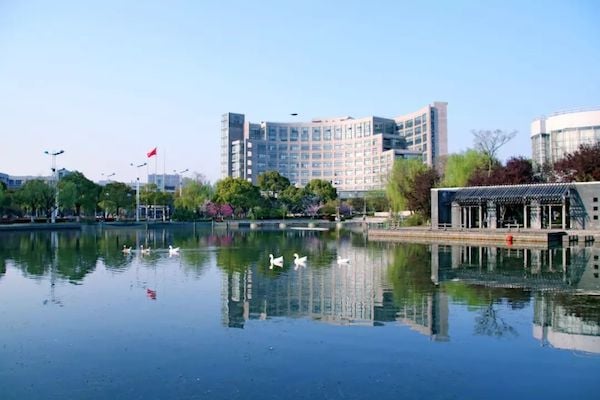
Northwest University

![]()
Introduction to Northwest University
Northwest University (NWU) can trace its origins back to Shaanxi Imperial College and Peking Imperial College in 1902. The University received its current name in 1912, and was renamed Northwest National University in 1923. With institutions such as Peking National University, Peking National Normal University and Beiyang National Engineering College, which moved inland to Shaanxi province when the War of Resistance against Japan broke out in 1937, the University merged to form Xi’an National Provisional University. It was then renamed Northwest Associated University in 1938 and regained the name Northwest National University in 1939. In the early years after the founding of the People’s Republic of China, Northwest University was a comprehensive university under the direct jurisdiction of the Ministry of Education. In 1958, NWU came to the administration of Shaanxi province. In 1978, NWU was designated as one of the national key universities. Currently, NWU is under the joint administration of the Ministry of Education and Shaanxi province. Northwest University has been selected as one of the leading universities sponsored by the national “211 Project”. NWU is also one of the first universities with “First-Class Discipline”.
For over 110 years, following its vision of “promoting the national spirit, integrating the ideas from around the world and shouldering the responsibility of developing northwest China” and its motto of “Fairness, Integrity, Diligence and Simplicity”, Northwest University has strived for excellence in the face of difficulties and challenges. Through unremitting efforts, NWU has attracted a generous number of distinguished scholars, cultivated generations of talents, and made a series of significant academic achievements. NWU has also developed the academic mindset of being rooted in northwest China with a global view and creating new knowledge while inheriting past civilizations. In addition, it has fostered a talent education philosophy which helps students to develop cultural ideals, integrative learning abilities and the courage to achieve as much as possible in the future. NWU has been honored as “the Mother of Chinese Petroleum Engineering,” “the Cradle of Economists” and “the Cradle of Writers.”
Northwest University has 3 campuses: the Taibai Campus, the Taoyuan Campus and the Chang’an Campus. They cover a total area of approximately 400 acres, and comprise 23 schools and departments, plus a graduate school. In addition to 86 undergraduate degree programs, NWU has been authorized to confer doctoral degrees in 24 first-tier disciplines, master’s degrees in 37 first-tier disciplines, and professional programs in 14 categories. NWU has developed 1 first-tier national key discipline (covering 5 second-tier disciplines), 4 second-tier national key disciplines, 1 national key discipline under cultivation and 22 post-doctoral programs. Moreover, NWU houses 1 national key laboratory, 1 national research center for engineering & technology, 3 national bases for international scientific & technological cooperation, 1 Base for University Discipline Innovation & Foreign Experts Introduction Project (111 Project), 1 national demonstration base for innovative talent cultivation, 3 national & local joint engineering research centers, 1 provincial & ministerial joint cultivation base for national key laboratory, 7 national experimental teaching demonstration centers, 1 national virtual simulation experiment teaching center, 7 national bases for talent cultivation with a national base for the cultural quality education of college students, 39 provincial (ministerial) research centers for engineering & technology, and 17 provincial (ministerial) research centers for the humanities & social sciences.
Northwest University has about 2,740 members of faculty and staff, including 3 academicians of the Chinese Academy of Sciences, 10 academicians (Professors) by courtesy,1 member of the International Academy of the History of Science, 20 professors of “the Cheung Kong Scholars Program”, 17 professors of “the Recruitment Program of Global Experts (the 1,000 Talent Plan) ”, 12 professors of “the National Special Support Program for High-level Personnel (the 10,000 Talent Plan)”,9 winners of China National Funds for Distinguished Young Scientists, 9 winners of China National Funds for Outstanding Young Scientists and 14 members of the National Key Talent Project. NWU also boasts 5 Nationally Distinguished Teachers, 21 members of “the Century Talent Plan” of the Ministry of Education and 5 members of Young Leaders in Scientific and Technological Innovation of Ministry of Science and Technology. Currently NWU has a student population of over 25,467, including 7,592 graduate students and 1,036 international students.
To date, Northwest University has won a number of major scientific research awards, including the National Natural Sciences Awards (the first and second prizes), the National Technological Invention Awards (the second prize), the National Scientific & Technological Progress Awards (the second prize), the Cheung Kong Scholars Achievement Awards (first prize) and the WIPO-SIPO Award for Chinese Outstanding Patented Invention (the golden prize).
Northwest University attaches great importance to international exchange and cooperation, and has established collaborative relations with more than 100 institutions of higher learning and research in more than 20 foreign countries, including USA, UK, France, Germany and Japan, as well as regions such as Hong Kong and Taiwan. To its credit, NWU is listed as one of the leading universities in the world by the Encyclopedia Britannica.
![]() Northwest University Campus
Northwest University Campus
Video
Welcome to Northwest University
Campus Views
![]() About Xi’an
About Xi’an
Xi’an (![]() Panorama) is the capital of Shaanxi Province and the oldest of the Four Great Ancient Capitals, having held the position under several of the most important dynasties in Chinese history. It is about 2 hours by air from Beijing and 2 hours from Shanghai. Known as the leading city of China’s Western Development Drive Program since 1990s, Xi’an is an important economic, cultural, industrial and educational center of the central-northwest region, providing visitors with modern and convenient facilities.
Panorama) is the capital of Shaanxi Province and the oldest of the Four Great Ancient Capitals, having held the position under several of the most important dynasties in Chinese history. It is about 2 hours by air from Beijing and 2 hours from Shanghai. Known as the leading city of China’s Western Development Drive Program since 1990s, Xi’an is an important economic, cultural, industrial and educational center of the central-northwest region, providing visitors with modern and convenient facilities.
Transportation
Xi’an was the eastern terminus of the Silk Road, and played a very important part in Chinese history. Today Xi’an is one of the most important and convenient transportation hubs in central and western China. Frequent flights, trains and buses connect the city with other major cities all around the country. The urban transportation of the city has been somewhat frustrating in recent years because of the metro construction. Now metro line 1, line 2 and line 3 are in operation. Several other lines are also under construction or in the planning process. For now the buses and taxis can take you to get around the city.
Food
Xi’an is a foodie paradise, with excellent restaurants serving local and international cuisine. You can’t come to Xi’an without sampling the following: savory, often spicy roujiaomo “burgers”; DIY roupaomo, a soupy concoction of bread in mutton stew; cumin-laden meat skewers in the Muslim Quarter; and refreshing liangpi rice noodles with peanut sauce, perfect for cooling down in the heat of summer. Make sure to visit the night market to explore the flavors of Shaanxi street food.
![]() Teaching Program
Teaching Program
![]() ISAC University Teaching Program
ISAC University Teaching Program
![]() Related Universities
Related Universities





 Photos
Photos

